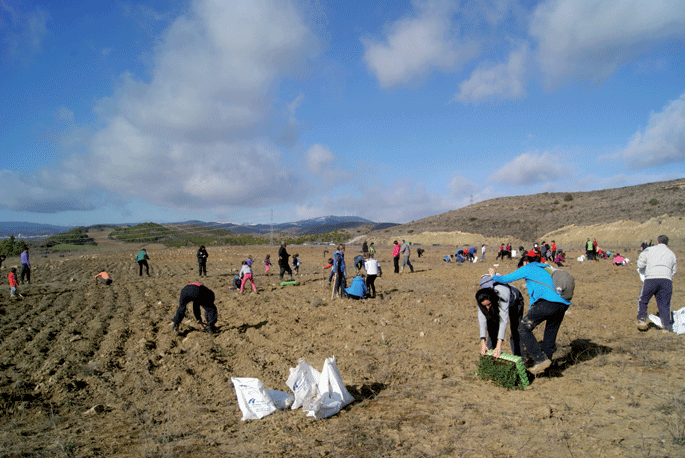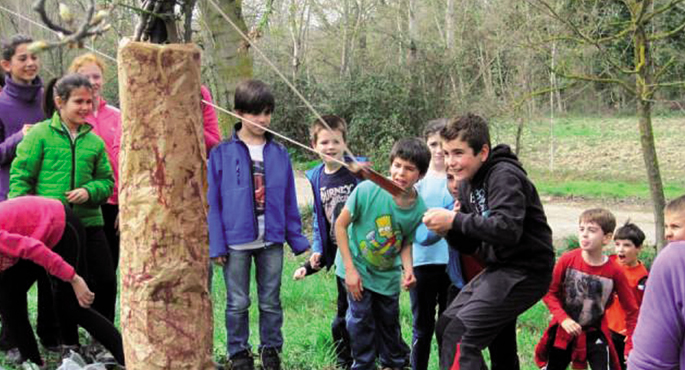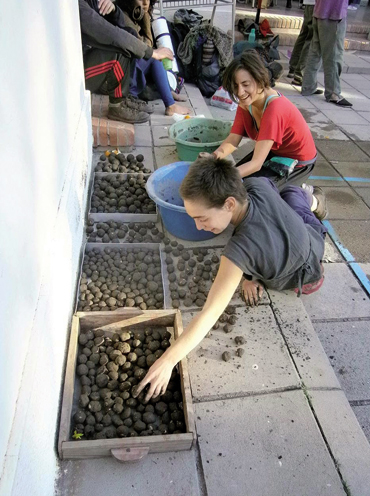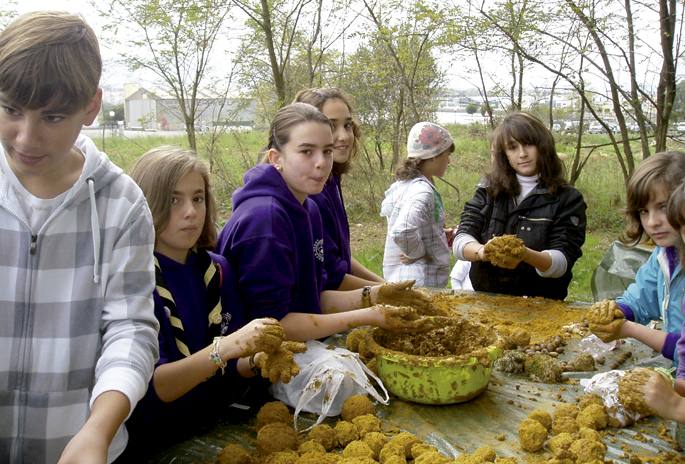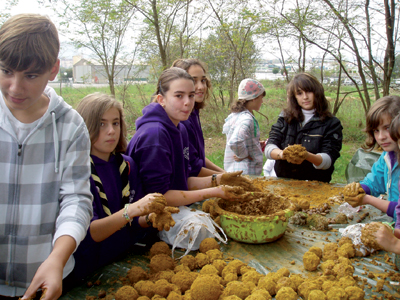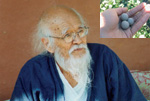Masanobu Fukuoka: the revolution consists of a straw ray
- Not only without poisons and synthetic fertilizers, Masanobu Fukuoka, a pioneer of natural agriculture, proclaimed the cultivation of unplowed and uncultivated vegetable gardens. He said that cultivation should be based on respect for nature and the spiritual development of man.
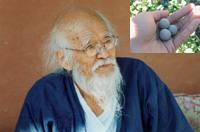
The purpose of cultivating the earth is not to grow crops, but to grow and perfect human beings.” The words are spoken by Masanobu Fukuoka. Fukuoka, who treated agriculture as a spiritual path, died on August 16 at the age of 95. For many, it revolutionized the cultivation, which, combined with a philosophy based on Taoism, cultivated “natural agriculture”. Farmers who work in alternative models away from the industrial model of Lurgeria consider the reference to be irrevocable.
Fukuoka is considered by some to be the forerunner of the model known as Permaculture. The truth is that anyone who makes agriculture or non-industrial horticulture will find many of his ideas reflected in the writings of the Japanese. But Fukuoka lived his relationship with nature in a very radical way. Don’t plow or plow, use fertilizers or pesticides, remove weeds, prune or sprout. These four radical principles and the diffusion of the seeds to create new forests in the mountains in clay balls (nendo dango technique) are the most outstanding features of Masanobu Fukuoka’s model.
He put it together in three books: “The Revolution of a Straw Ray” (Spanish: La revolución de una brizna de paja is available for free on the Internet), “The Natural Path of Carpentry” and “Back to Nature”. He started writing and publishing after 60 years of age. Previously, he spent his entire life on the family farm, discovering nature and cultivating the garden.
Fukuoka was founded in 1913 on the island of Shikoku in southern Japan, in a family of farmers. He studied microbiology and specializes in plant diseases. Although he had a good and safe job as a civil servant at the age of 25, he returned to his homeland, forced by a premonition: in friendship with the land and finding that he needed a crop that would not require more work than necessary.Larry
Korn, who translated “The Revolution of a Straw Ray” from Japanese into English, tells in the preface of the book how Fukuoka discovered one of the keys to the new model while walking in the fields. “Coincidentally, in an area that had been left uncultivated for many years, he found strong rice plants among the fortified herbs.” If nature could do that, why so much work?
All the activity began to adapt to the rhythm of nature in Fukuoka. To begin with, instead of sowing rice seeds in the spring, sow them in the fall, which is the season in which they would naturally fall to the ground in nature. No more watering the rice. Don't plow any land. To remove the weeds, don’t make any more excuses. Instead, plant white clover all over the field, and also cover the soil with wheat straw or oat plants. At the head of everything, he tried to put as few obstacles as possible to nature on the path between sowing seeds and harvesting crops. On the other hand, the tree did not prune them, but allowed them to grow on their own.
The Earth, if it has been cultivated in the old mold, let alone used in the industrial model, seems to need more than twenty years to recover, but Fukuoka believed that healing is possible. Not only that, it is said that in the natural method you can obtain crops as much as those that are acquired by ploughing and chemical fertilizers, in addition to healthier products.
To humidify the desiccated “Nendo-dango”
The headings of Masanobu Fukuoka are based on the line of Zen Buddhism and the Tao Te King. In them the idea of “Wu Wei” is essential, which some translate as “not to do” and others as “not to intervene”. By law in any conflict, Taoists would also base their relationship with the land on “doing it without doing it.”
“Agriculture is – writes Fukuoka – an activity in which the farmer has to adapt himself to nature. To do this, you have to look at the rice plant and listen to the words that he said. If you understand what the plant tells you, you adjust your heart to that of the plant and then you take care of it. We really don't have to take care of him. The plant itself will grow. We only serve nature. (...) I’m not talking about observing the plant, because in this way you will transform it into an object different from you. This is very difficult to explain in words. You have to become a rice plant yourself, so to speak, as a subject who looks at you until you disappear.” The main idea of Fukuoka is to work in union with nature rather than in struggle with it: plants and animals, including those that most orthodontists consider harmful, get to know them from the bottom, understand the connections
between them and adapt our work to them. He considers that most of the work done by the peasants is useless, laborious and harmful to nature, proposing instead to intervene as little as possible in the processes so that the land gives its benefits.Masanobu
Fukuoka has become famous in many places for its system of re-greening deteriorated areas and deserted areas, known as nendo dango. The secret lies in sowing the seeds wrapped in clay balls.
The area where you want to dress in jungle is first studied and the seeds of plants adapted for it are collected. It often takes 100 different seeds for the ecosystem to breathe well and quickly, on the one hand trees, on the other herbs, plants and weeds... Cotton and paper can also be added to give consistency to the granules. All are mixed and the clay and water are added gradually, mixing without interruption of the mass, until granules with diameters of two or three centimeters are collected around the seeds. After drying in the shade, they are ready to be thrown into fields or fields. The animals will not eat them, and they will begin to germinate with the next rain, each in its own season.
Thousands of students passed through Masanobu Fukuoka’s farm trying to dress up in natural agriculture. The old master has once again run the world giving speeches. In his old age, Fukuoka was in a growing hurry to spread as much nendo dango as possible around the world. He was terrified by the loss of forests and biodiversity. He said he had to move fast.
Recently the old man responded to an interviewer: “I tell you to stone the books, you don’t have to think so much. Put what you want in the article, but put it in the last lines: “This conversation is useless.” We have to plant clay balls, because we don’t have time.” Footer of
the photo: In the picture Masanobu Fukuoka sitting in the doorway of the house. He associated what he called natural agriculture with the spiritual experience as much as with the knowledge of nature, but making it clear that in order to make natural agriculture there is no need to be of a certain mentality. People came to him from all over the world at the door, though they knew the carpentry more deeply, and Fukuoka ran the world through his old age of orator. In the last few years, it was his main practice to spread the nendo-dango technique –see the balls in the small image– in all of them. He was convinced that by using clay balls with seeds, the arid landscapes of the Mediterranean can be reforested, and so can many of the world’s deserts. The dead Artio was engaged in the tai-free action of Fukuoka, which called for “non-intervention.”
For more information
- The Fukuoka Farming Website, although not updated a very good source
- Toni Marin interviews Fukuoka, in Spanish
- Masanobu Fukuoka on Wikipedia in English
- Rich interview with Fukuoka on the Mother Earth News site in 1982
- The Revolution of a Paja Breeze Available for Free (PDF)
- Report on YouTube by Masanobu Fukuokaz, in Spanish
- On YouTube, students doing “nendo-dango” with teacher Fukuoka, in Japanese
- On YouTube, Making and Planting Clay Balls in Texas USA
Nafarroako Ikastolen Elkarteak eta bertako ikastolak antolaturik, Zangozako zabortegi zaharreko lurra berreskuratuko du basoak, “La Celada” deituriko parajean. Bertan jaurtiko ditugu Argia Egunean haziz eta buztinez eginiko nendo-dango bolaxkak ere.
Jasangarritasuna, parekidetasuna, lurraldetasuna, euskaltzaletasuna eta parte-hartzea. Bost balio horiek hartu ditugu kontuan egitaraua adosterakoan, oholtzaratuko diren izenak bilatzerakoan, zerbitzatuko ditugun elikagaiak hautatzerakoan...Hona irailaren 27an Usurbilen... [+]
Zuhaitz, sastraka eta beste landareen haziak nahastu buztin eta konpostetan, bola txikitan bildu eta erein. Beste edozein jolas bezain atsegina da Argia Egunean praktikatuko dugun Nendo Dangoa eta, gainera, gizakiok antzutu ditugun lur eremuei arnas berria itsatsiko diegu.
Nendo Dango tailerra dago antolatuta, beste hainbat ekitaldiren artean, irailaren 27ko ARGIA Egunerako Usurbilen. Teknikaren zehaztapenak “Hazitik hasita mundua oihantzeko” kronikan azalduta daudenez, hona laburpena.
Euskaltzaleak, ARGIAko irakurleak, langileak, kolaboratzaileak, harpidedunak, blogariak, sare sozialetako jarraitzaileak... azken finean, ARGIAren inguruan batzen garen komunitatea elkar ezagutu eta egun eder bat pasatzeko aukera emango digu aurten berreskuratuko dugun ARGIA... [+]
Noizbait basoz beteta egon zen ludia berriro oihanez beztitu beharra dago, edonork dakienez. Itsasoaz gain, zuhaizpeetan datza bioaniztasuna, klimaren erregulazioa eta elikadurak ekoizteko beharrezkoa den lurzorua bera. Masanobu Fukuokak asmatutako “Nendo Dango”... [+]
Ez bakarrik pozoirik eta ongarri sintetikorik gabe, soro-baratzeak goldatu eta jorratu gabe lantzea aldarrikatu zuen Masanobu Fukuokak, nekazaritza naturalaren aitzindariak. Laborantzak naturarekiko errespetuan eta gizakiaren garatze espirituzkoan oinarritu behar duela zioen.











